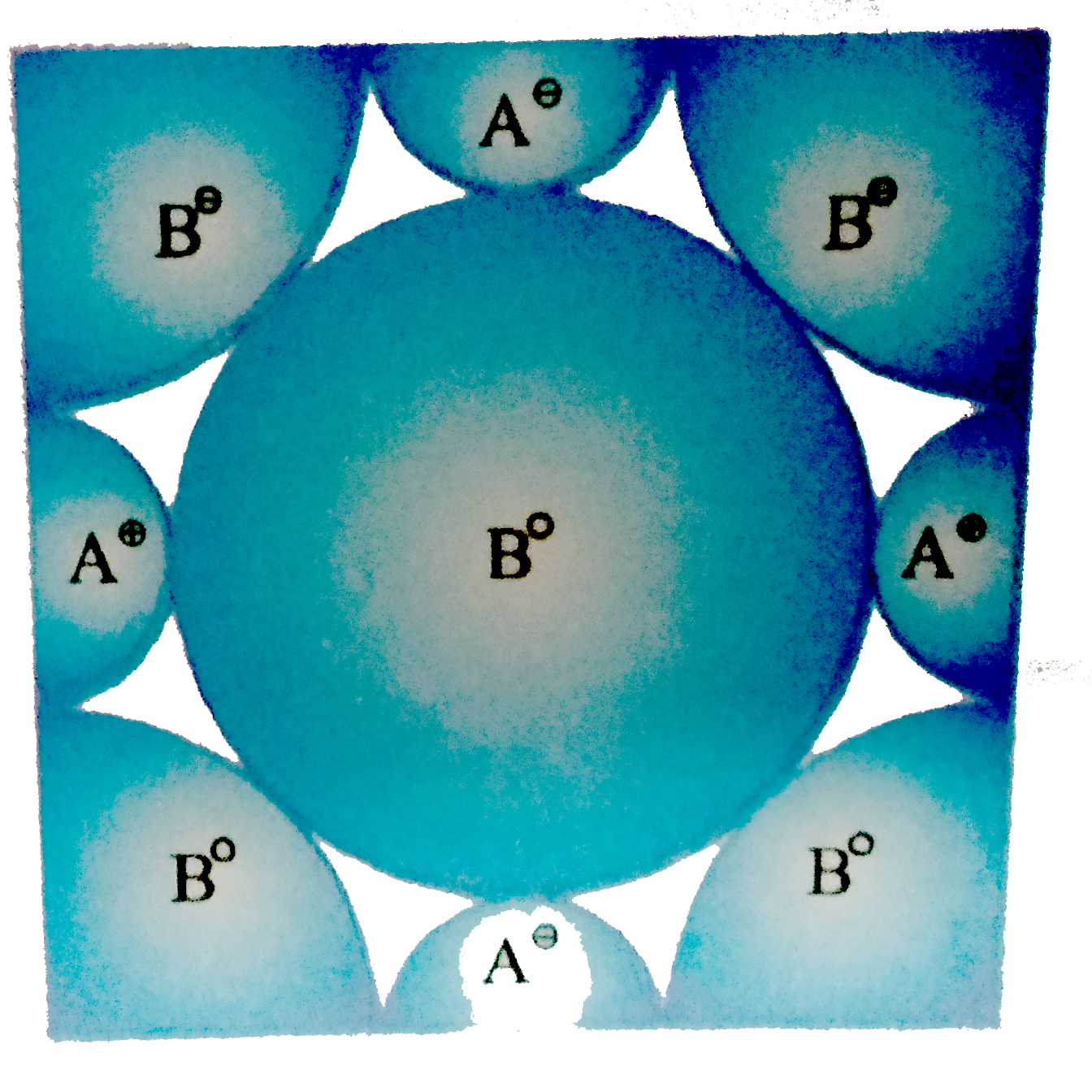If all the atoms touching one face plane are removed in solid A⊕BΘ having rock salt type structure, then the formula of the compound left and the defect brought by this removal, respectively, is
a. AB, Frenkel defect
b. A2B, Frenkel defect
c. AB, Schottky defect
d. A2B, Schottky defect
AB, Frenkel defect
A2B , Frenkel defect
AB , Schottky defect
A2B ,Schottky defect
The correct Answer is:C
(i) Since A⊕B⊕ has NaCl-type (fcc) structure.
So B⊕ are in fcc arrangement.

Removed atoms from one of the face Number of B⊕ ions=4(corner+face center=1+3=4)
Number of A⊕ ions =4 [in oV formed at body center+edge center =1+3=4]
Number of B⊕ ions removed =4 corner ×18 ltbr> per corner share+1 face center ×12 per face
center share =48+12=1
Number of B⊕ left =4−1=3
Number of A⊕ ions removed=4 edge center ×14 per edge center share =44=1
Number of A⊕ ions removed =4 edge center
×14 per edge center share =44=1
Number of A⊕ ions left =4-1=3
Thus, formula=A3B3=3AB.
ii. As atoms (or ions) are completely removed Hence the defect in the crystal in Schottky type.
Similar Questions
Knowledge Check
In a solid (AB) having rock salt type structure all the atoms along body diagonal plane are removed the formula of the remaining unit cell will be
AABBABCA2BDA3B2In a solid having rock salt structure, if all the atoms touching one body diagonal plane are removed (except at body centre), then the formula of the left unit cell is
AA3.5B2.5BA7B3CA5B3DA3B5Which of the following point defects are shown by AgBr (s) crystals ?
(a) Schottky defect
(b) Frenkel defect
( c) metal ecxess defect
(d) Metal deficiency defectA(A) and (B)B(C ) and (D)C(A) and (C )D(B) and (D)
Calcium crystallizesin f unit cell with 0.556nm. Calculate the density if
a. It contains 0.2% Frenkel defects
b. It contains 0.1% Schottky defects
View SolutionCalcium metal crystallizes in a face -centred cubic lattice
with edge of 0.556 nm. Calculate the density of the metal
if it contains (i) 0.5 % Frenkel defects (ii) 0.2 % Schottky defects .
View SolutionExplain the following terms with suitable example:
a. Schottky defect b. Frenkel defect
c. Interstitials d. F-centres
View SolutionWhat is the density of Na2O having antifluorite-type crystgal stryctutre, if the edge length of cube is 100gm and what is the effect on density by 0.05% Frenkel defect?
View Solutionwhich of the following point defects are shoen by AgBr (s) crystals ?
(a) Schottky defect
(b) Frenkel defect
( c) metal ecxess defect
(d) Metal deficiency defect
View Solution